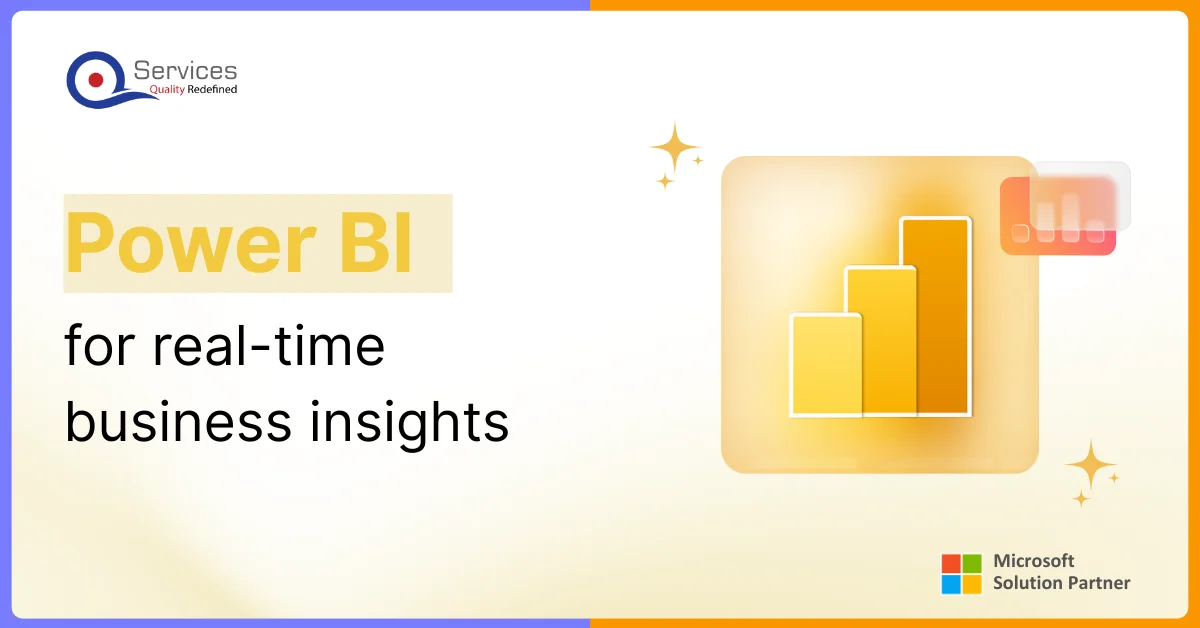
Home » Getting Started with .NET Core: A Comprehensive Guide for Beginners

To know about dot net fundamentals, .NET is basically a free and open-source developer platform created by Microsoft. It allows developers to create a wide variety of applications including web, mobile, desktop, games and more. It is versatile and supports multiple programming languages including C#, F# and Visual Basic. This is part of the .NET basics that any new developer needs to grasp.
A .NET application runs the Common Language Runtime (CLR). Applications can run in a managed environment with features such as garbage collection, memory management, type safety, exception handling, and security. The Virtual Machine component of the .NET Framework (CLR). Is responsible for it.
CLR automatically handles memory allocation and deallocation, freeing up memory occupied by objects that are no longer in use, thus preventing memory leaks.
Common Intermediate Language (CIL) is another name for the intermediate language (IL) that is created when you write.NET code. Any system that has a.NET runtime can execute this IL code because it is platform-independent.
Here’s an overview of the execution process:
Compilation:
Your source code is compiled by a .NET compiler into IL (Intermediate Language) code.
Example: You write a code in C# that Code will be converted to IL.
Loading:
The compiled IL code is loaded into the CLR environment.
JIT Compilation:
The JIT compiler translates the IL code into native machine code that the operating system can execute.
Execution:
While managing different runtime services like memory and exception handling, the CLR runs the native machine code.
Garbage Collection:
One of the CLR’s automatic memory management features is garbage collection. In order to stop memory leaks and enhance application performance, it periodically releases memory that has been used by objects that are no longer in use.
You can visit Common Language Runtime (CLR) overview – .NET | Microsoft Learn this website for more information
Assemblies
Common Language Specification (CLS)
The (CLS) defines rules that all .NET languages must follow. Code written in any .NET language can be used by other .NET language with the help of CLS. For instance, the CLS guarantees that methods and data types are compatible with various.NET languages.
Managed Code
Managed Code that operates under the CLR’s supervision—which offers functions like garbage collection, exception handling, and type safety—is referred to as managed code. Unmanaged code, on the other hand, lacks these services and is run directly by the operating system.
.NET Framework:
The original implementation of .NET, which is used primarily for building Windows applications.
.NET Core:
A cross-platform, open-source framework for building modern applications that can run on Windows, macOS, and Linux.
Xamarin/MAUI:
A framework for building mobile applications using .NET.
ASP.NET:
A framework for creating services and online apps. The most recent cross-platform iteration of ASP.NET is called ASP.NET Core.
Understanding .NET Core architecture for new developers:
It’s important to understand the architecture of .NET Core before diving deep into application development. Knowing how the framework is structured and its components will help you better design and optimize your applications.
Get free Consultation and let us know your project idea to turn into an amazing digital product.
The main language used for.NET development is C#. Familiarity with C# syntax and features will be very helpful. If you’re new to C#, consider going through some introductory tutorials.
.NET is heavily based on object-oriented programming. You should understand the four main principles of OOP:
Encapsulation is the process of combining data and methods that work with the data into a single entity, like a class.
inheritance encouraging code reuse by creating new classes from pre-existing ones. Mainly for Code reusability.
The capacity to handle things in diverse ways according on their class or data type.
Presenting only the essential functionality while concealing the intricate implementation details.
You can prefer .NET documentation | Microsoft Learn this source to learn about these concepts.
1.Download the .NET Core SDK:
Install .NET on Windows – .NET | Microsoft Learn
How to Install .NET Core: Beginner’s guide to .NET Core development
2.Run the Installer:
3.Verify the Installation:
4.Set Up Your Development Environment:
Here’s a step-by-step guide to installing Visual Studio 2022 on Windows:
1.Download the Installer:
Install Visual Studio and choose your preferred features | Microsoft Learn
2.Run the Installer:
3.Select Workloads:
4.Install Individual Components:
5.Choose Installation Location:
6.Install:
7.Complete the Installation:
8.Sign In or Skip:
9.Set Up Your Environment:
10.Create Your First Project:

Now Let’s learn the MVC architecture, Dependency Injection, Repository pattern, Asynchronous Programming, Entity Framework. We will learn all these things with the practical implementation so, it will be easy for us to learn.
We will make an Employee registration Web App by using the .Net Core MVC basically it is our simple CURD operations.
Step 1. Open the Visual Studio and select Create a new Project.
Step 2. Then search for ASP .Net Core Web App (Model-View-Controller) with C#. Then Next
Step 3. Now give the name of the project and browse the location then click Next
Step 4. Select the framework in this project we will select the 8.0. Then click on create
Step 5. At the top you can se a View option click on that and then Solution Explorer
Now, First thing we need to do is to install the all required Packages
Step 6. Install all required Packages
Microsoft.EntityFrameworkCore.Design
Microsoft.EntityFrameworkCore
Microsoft.EntityFrameworkCore.SqlServer.
Microsoft.EntityFrameworkCore.Tools.
Microsoft.AspNetCore.Mvc.Razor.RuntimeCompilation — it is for getting code updates just by refresh, after using it we did not need to restart the project again and again after any code update.
Go to Tool => NuGet Package Manager => Manage NuGet Package Solution
Search for all the required packages and install them according to your project version.
In same way install all the packages.
You can check all these installed packages by double click on the project name Under the solution Explorer
Step 7. Set Up the connection string
Goto solution explorer and select the appSetting.json
Write your connection string
Now configure this connection string in Program.cs file
Now Add new ApplicationDbContext which is responsible for our database connection
Right Click on project name under solution Explorer and add class named as ApplicationDbContext Now add all these thing in Program.cs file
Build Solution
To add your connection Open the Package Manger Console and then run commad
Add-Migration InitialLoad
Then Update-Database
And now your database connection is ready.
You can check this connection By Sql Server Object Explorer
Click on View => Sql Server Object Explorer; find you server name which you have added in connection string and then find the database.
Step 8. Now add Model; Right click on Model folder then Add Class give the name of the class
Add the properties in the class
Add this class in ApplicationDbContext class
Then in package manager Add-Migration Employee
Update-Database
After this step you employee table will be add in your database you can check it in you SQL Server Object Explorer.
Step 9. Now we add repository for making the methods, Which contains functionality of Create Update Delete and Read Data from Database.
Right click on Project and then Add New folder named as Repository
Now Right click on Repository Folder and then add Interface Named as IEmployeeRepository here we define our methods.
Step 10 : Now add the EmployeeRepository class in Repository folder
Implement this in EmployeeRepository Folder
Now Add this IEmployeeRepository and EmployeeRepository in Program.cs file for DI
// Register the EmployeeRepository and IEmployeeRepository for dependency injection builder.Services.AddScoped<IEmployeeRepositroy, EmployeeRepository>();
Step 11. Now add the EmployeeController in Controller Folder
Now in controller we can add further functionality
Ctor is the short way to add constructor
In this way Inject the dependency, and add the other functionality
Tip: Use Try Catch block for exception handling.
Step 12. Now Create the View
Right click under the Index Action and click on add view
In this view we write the html code to display our employee list
In Same Add View for the Create and details
Same for edit but the details comes automatically for the selected employee
View for Delete
Now Add the Employee button in Navbar
Go to View-Shared-> _Layout.cshtml
Here’s the flow of the ASP.NET Core MVC lifecycle.
Flow:
Request is routed to the appropriate Controller.
The Controller processes the request, interacts with the Model, and returns a View or ActionResult to the client.
You’ve made excellent progress through this comprehensive guide, and it’s clear you now have a strong understanding of .NET Core’s core principles and development tools. From building your first application to mastering key concepts like Dependency Injection and Entity Framework, you’re now in a great position to tackle larger, more complex projects. As you continue to explore .NET Core and its ecosystem, remember that the tools available are vast, and mastering them will help you become proficient in ASP.NET Core development services. Take time to explore further topics such as cloud computing, API design, and performance optimization as part of your ongoing journey into .NET Core development services.

Pipeline failures can be expensive and harmful to the environment. Companies are using IoT applications in the oil and gas industry to prevent these breakdowns and stay ahead of problems.
![Azure IoT vs AWS IoT vs Google IoT Pricing: Feature Comparison Chart for Enterprise [2025]](https://www.qservicesit.com/wp-content/uploads/2025/03/Microsoft-Teams-vs-Slack-vs-Zoom-TCO-Analysis-for-Enterprise-Organizations-2.webp)
The Internet of Things (IoT) helps businesses run better by connecting devices, collecting information, and improving choices. But picking the best IoT cloud provider can be confusing. The main three are AWS IoT vs Azure IoT vs Google IoT.

In this blog, we’ll explore how these advances are shaping the future of field services and how companies are adapting to stay ahead in a competitive market. What are the key changes that businesses need to embrace to stay relevant and efficient?
.NET Core is cross-platform, open-source, and designed for modern app development, while .NET Framework is Windows-only and more mature.
Cross-platform, high performance, open-source, flexible deployment, and a unified runtime.
Download the installer from the official .NET website and follow the installation instructions.
The .NET Core Command-Line Interface (CLI) is a cross-platform toolchain for developing, building, running, and publishing .NET applications.
Run dotnet new console -n MyApp to create a new console application.
Use the Configure method in the Startup class to add middleware components.
ASP.NET Core is a cross-platform, high-performance framework for building modern, cloud-based, internet-connected applications.
Run dotnet new webapp -n MyWebApp to create a new web application.
Create a Dockerfile and use the docker build command to build the image.
Azure is Microsoft’s cloud platform, and you can deploy .NET Core applications to Azure using services like Azure App Service.
Use logging, debugging tools, and community resources like Stack Overflow and GitHub to troubleshoot issues.

Founder and CEO

Chief Sales Officer
